Outdoor Education: A Rich Environment for Growth and Learning
By: Ann Kumpf, MOT, Third Grade
There is no doubt that 2020 has been a year filled with anxiety, challenges and uncertainty. Yet another reality is that many adults and children are spending an increased amount of time in front of screens, as workplaces and schools have been thrust into the virtual arena, resulting in a lifestyle that can feel isolated and sedentary. Counteracting this trend is a task that educators now face. Outdoor learning provides the background for safe, rich, and meaningful educational experiences.
As students are returning to in-person learning, education looks a little different. In order to give children (and teachers) a much needed break from wearing masks in the classroom, teachers are finding new ways to use the outdoors to enhance the learning experience. While it might seem like this is taking away from educational time in the classroom, it is actually beneficial to the overall educational experience and well-being of the students.
“Playing outdoors is an ideal way to foster physical and cognitive skills necessary for academic success.”
Why take students outside?
From a developmental perspective, playing outdoors is an ideal way to foster physical and cognitive skills necessary for academic success. Physical activity stimulates the connections of neurons in the brain, therefore strengthening the ability to learn. Functional skills such as handwriting, copying notes from the board and paying attention are all dependent on underlying skills that develop as the body moves in all directions. Core stability is foundational to fine and gross motor skills. Wide open green spaces are an invitation for fun and motivating physical activity that strengthens the body.
Elementary age children are not the only ones who benefit from the outdoors. Middle schoolers and high schoolers alike can benefit mentally and physically from moving and getting outside. The tremendous value of nature is evidenced by one study that demonstrated that high schoolers who view green spaces outside their classroom window perform academically better than those who don’t. Anxiety levels are reduced and brains are restored when fresh air and green spaces provide a break from cognitive demands.
Utilizing nature in education is not a new concept. Charlotte Mason, well-known British educator during the turn of the twentieth century, included nature study as a core tenet of her education philosophy. She said, “Let them once get in touch with nature and a habit is formed which will be a source of delight and habit through life.”
While the study of nature itself is necessary and worthwhile in creating a sense of awe and wonder in children, nature also adds depth and value to the cognitive, spiritual, and social-emotional well-being of children. By including opportunities to play and learn in outdoor spaces, young minds journey down a path that guides growth in areas such as critical thinking, self regulation, and creativity. Open-ended outdoor play experiences set the stage for problem solving and self-competence in a way that structured classroom learning cannot provide.
Outdoor Learning at Cambridge
At Cambridge School, it is the hope that students will be sparked into a lifelong journey of connecting with God. What better opportunity for students to see and experience God than to be fully immersed in His creation. As they participate with the natural world, students get a chance to experience the divine attributes of God (Romans 1:20). Every frog, every flower, every blade of grass and every acorn is a testament of God’s character.
Our world and our nation are under a lot of stress, and children are feeling it. Being surrounded by nature is a proven way to reduce stress and anxiety. For students who may feel anxious in a walled classroom, natural spaces provide a place away from the typical academic and social stressors. Studies show that children exhibit decreased negative emotions and an increase in competence and resilience when they partake in outdoor experiences.
In order to promote learning retention in students, multi-sensory learning is the optimal choice. The more senses that are engaged in the learning experience, the more the learning is reinforced in the brain. Just about any subject can be taken outside and turned into a sensational learning moment. Whether learning math facts by skipping on a number line, digging in the dirt to experience an archaeological expedition or measuring the effects of soil types on plant growth, students can engage their whole bodies to acquire experiential knowledge. Students of all ages can participate in narration exercises using nature as a stage.
For those families who are still learning virtually, it is especially important to include outdoor time in the daily schedule. Providing outdoor movement breaks or allowing a child to do their reading outside are simple ways to support a child’s mental health. With a little creativity, fun activities can be added that complement learning. If you don’t have a yard, plan a visit to a local park or nature center.
“Whether learning math facts by skipping on a number line, digging in the dirt to experience an archaeological expedition or measuring the effects of soil types on plant growth, students can engage their whole bodies to acquire experiential knowledge.”
A Glimpse of outdoor learning in action
To give you a glimpse of what outdoor learning can look like, join the third grade class at Cambridge School as they take their lesson about early farmers to the woods:
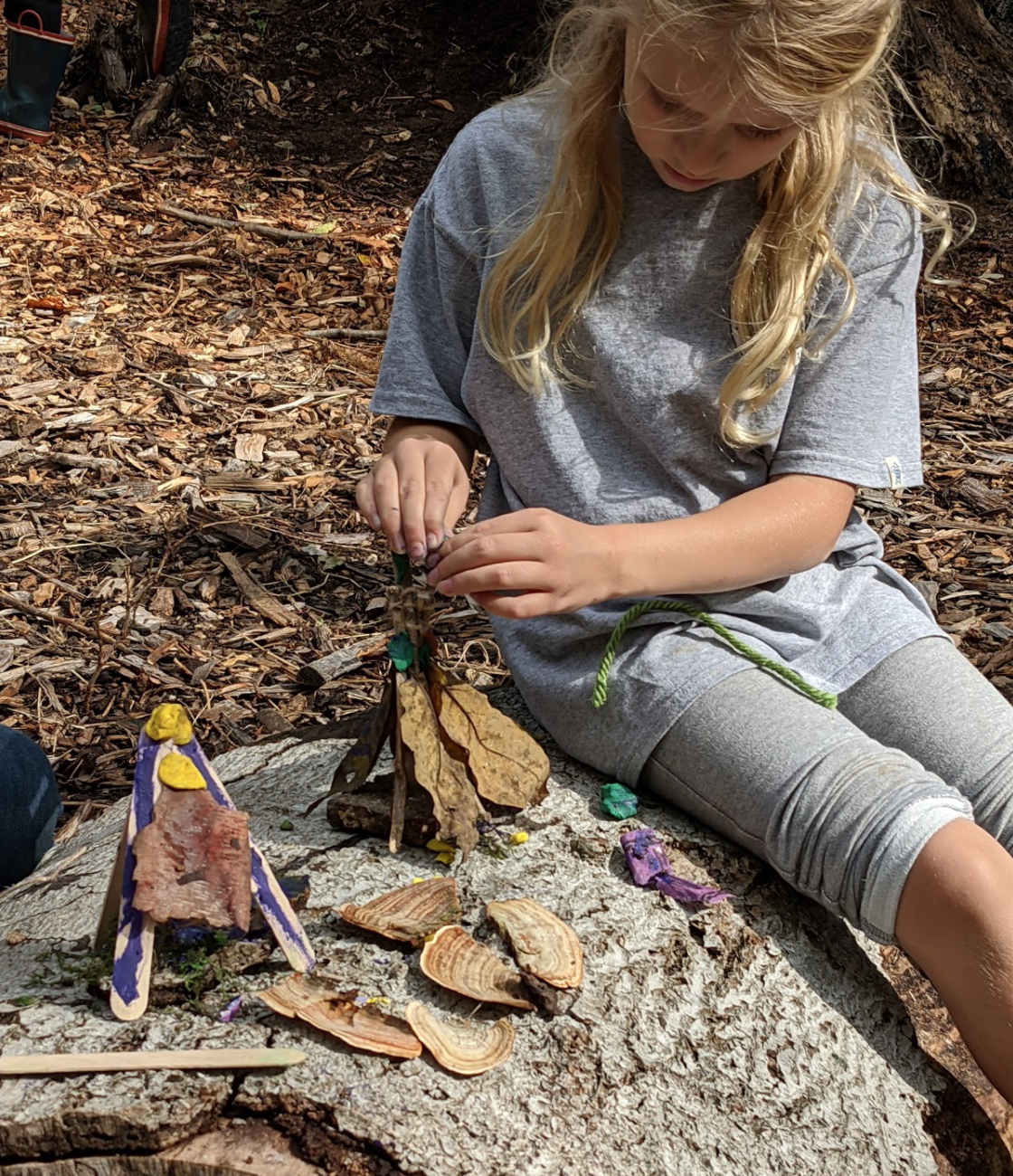
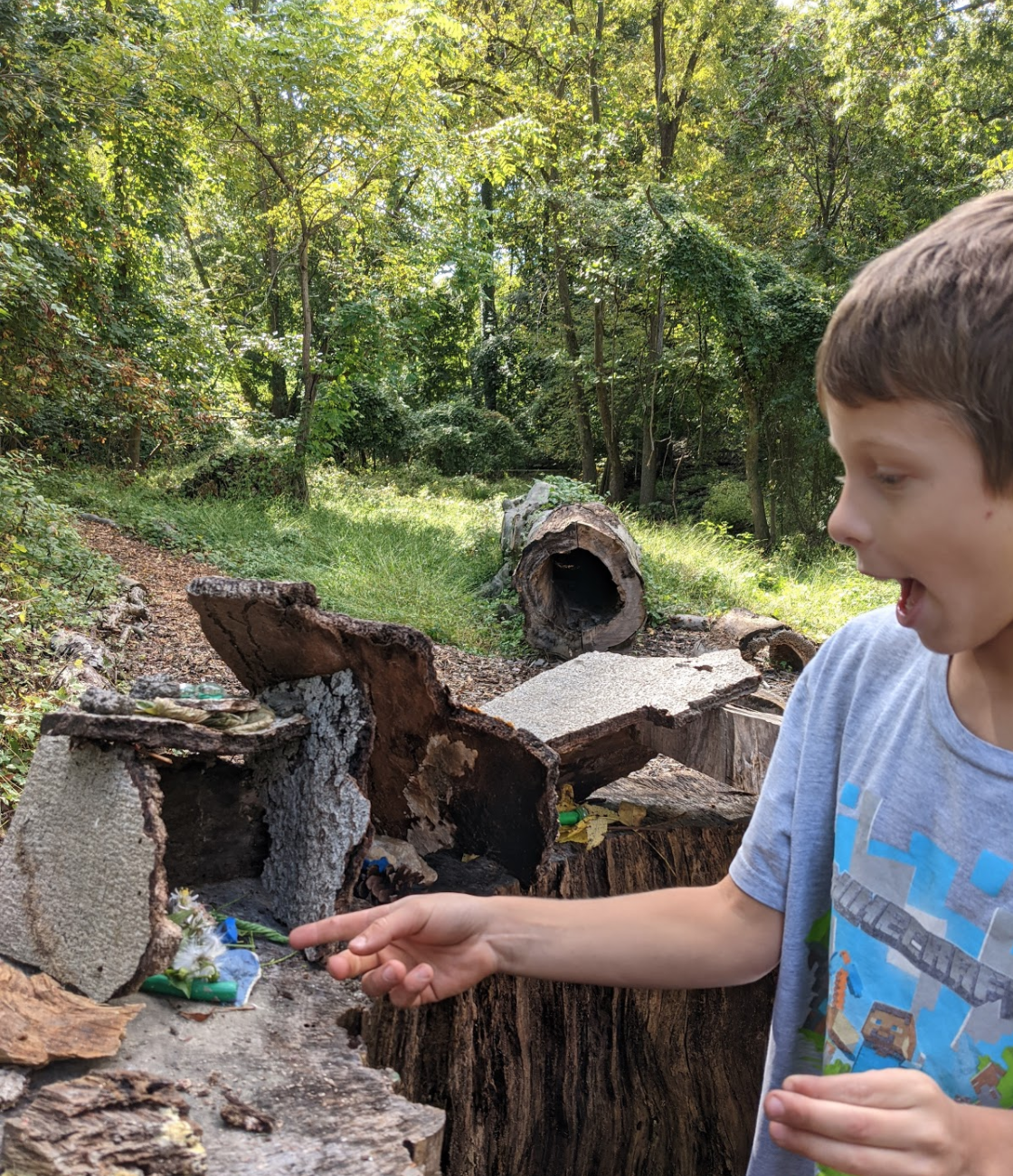
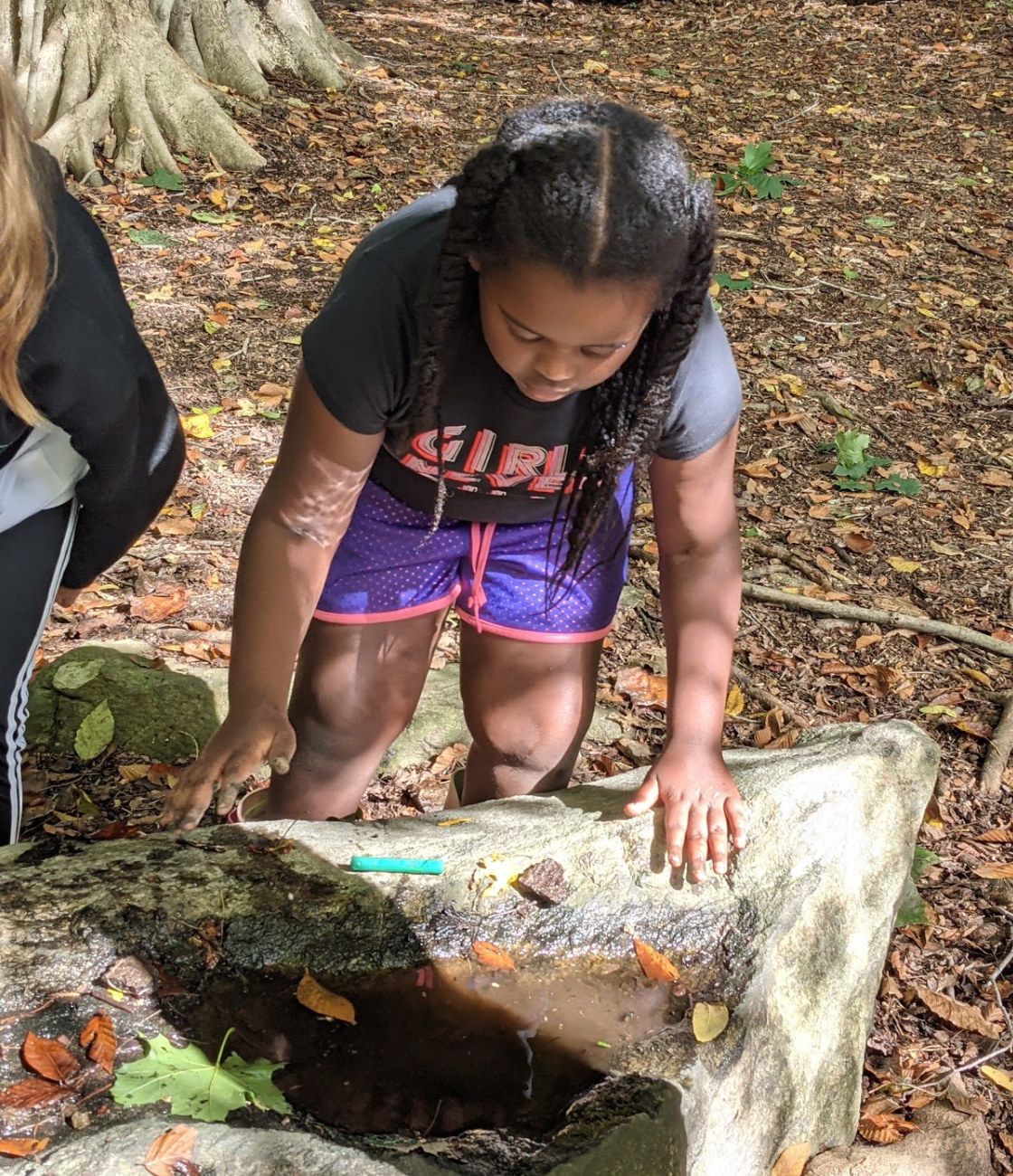

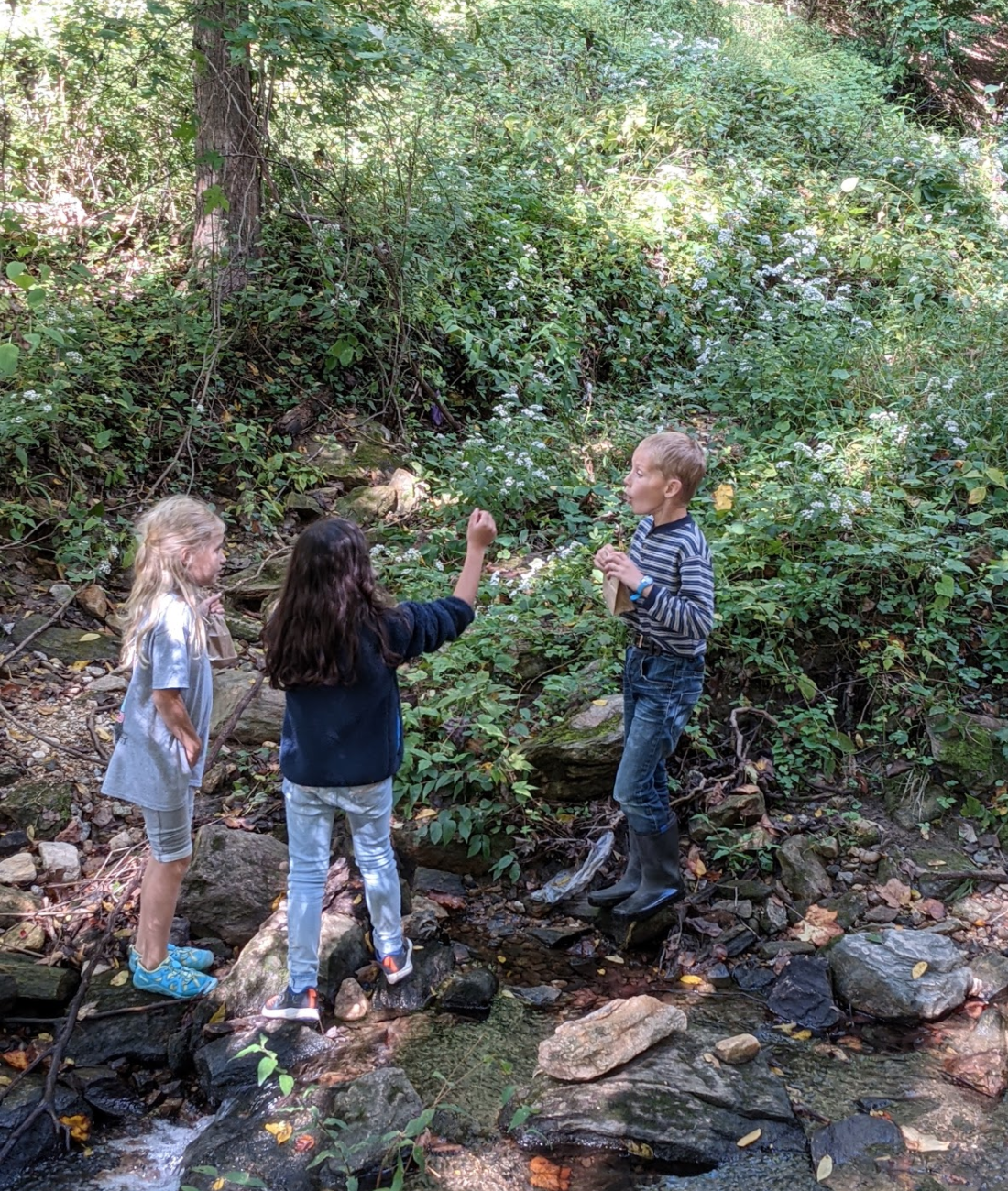
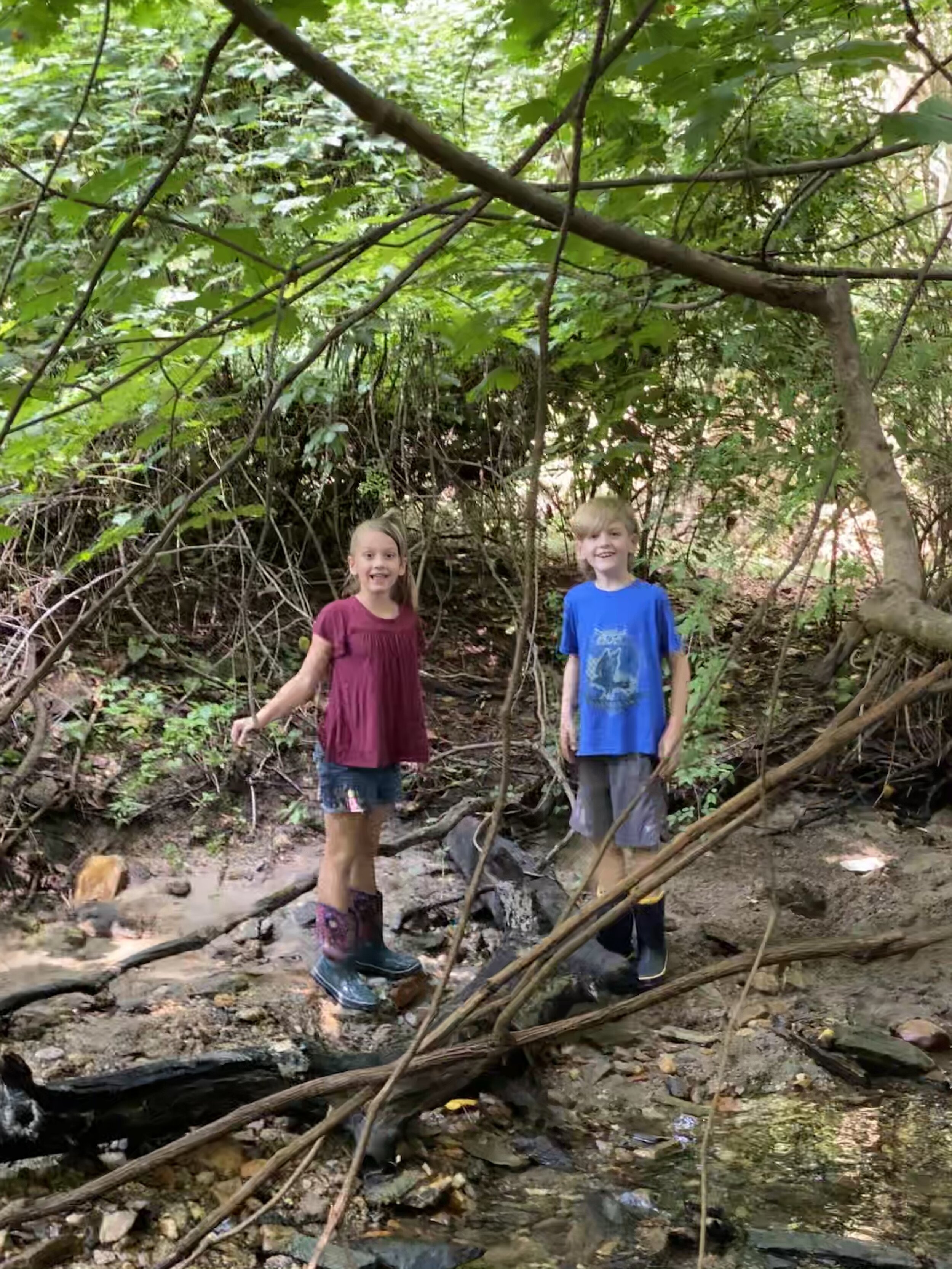
Background: The class just learned how early civilizations transitioned from being nomads into farmers. Some of the things early farmers had to take into account were growing crops, keeping animals, navigating weather, and building a safe home. To supplement this lesson, the students were divided into small groups (tribes), assigned an outdoor area and given one resource. Their assignment was to build a settlement and figure out how to work with the other tribes. What followed was a rich example of how outdoor experiences go far beyond what the classroom can offer.
Negotiating started immediately. There were questions such as, “How much wool can I have for 2 pieces of wood?” “How can I get some clay?” Innovation abounded as one group immediately started building a swimming pool and a hot tub for their tribe, while another group created a hospital complete with a boat to bring the sick from other villages. Social skills were sharpened as students worked together to meld their ideas and negotiate with other tribes. Creativity and problem-solving came into play as each group built miniature homes from natural objects found near their sites. Students move and challenged their bodies as they climbed the creek banks and traveled throughout the site. No one wanted to leave when it was time to go in.
Whether a spontaneous movement break or a planned learning experience, getting children outside provides benefits well beyond the immediate moment. While getting students outside may be a result of challenging circumstances, it is a positive gain for education and the well-being of students.
About Ann: Ann Kumpf, MOT, is an occupational therapist who specializes in outdoor therapy. She is an entrepreneur, blogger, nature-lover, mother of 7, grandmother of 3, and, fortunately for Cambridge, an instructor for our 3rd graders. You can learn more about her work outside of Cambridge at her website.




